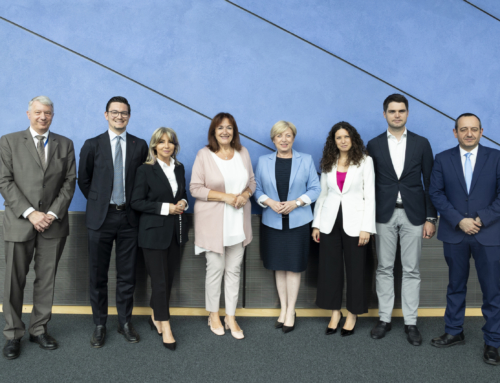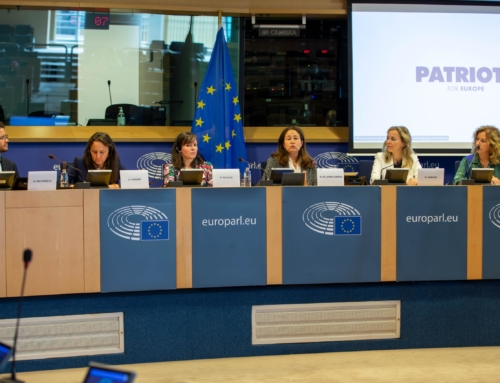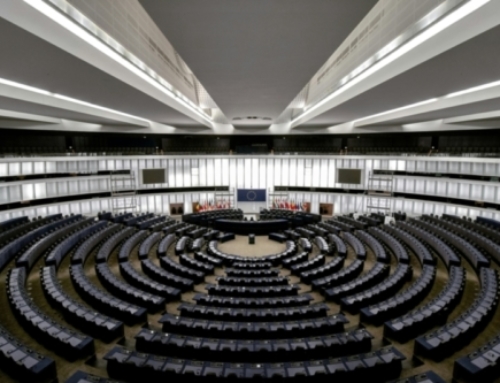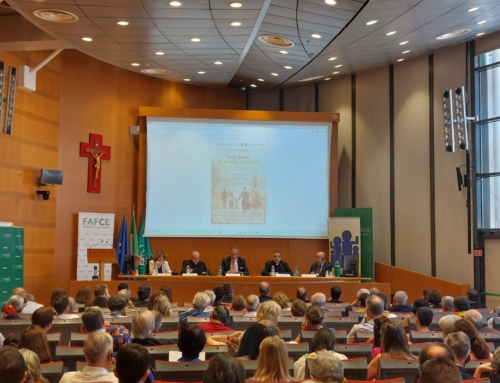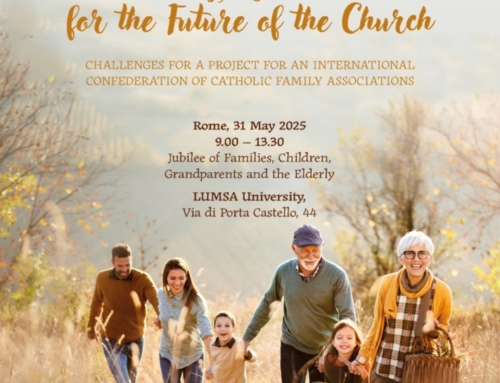The activation of family associative networks
A European case study of the FAFCE
3 November 2022,
Research supervisors: Giovanna Rossi, Sara Nanetti
Promoters: Fédération des associations familiales catholiques en Europe – Nonni 2.0 – Family Studies and Research University Centre of Catholic University of Milano

Family associations are a representative field of study for the human sciences – and sociology in particular – because of at least three specific features: their form, which is generally reminiscent of third-sector organisations, the role that families play within them, and the supporting role that these organisations typically serve with their activities.
The data derived from a research titled ‘Exploratory Research on Family Associations in Europe’, which were presented in the volume Le nuove dinamiche partecipative delle famiglie in Italia e in Europa [The new forms of family participation in Italy and Europe] have outlined the characteristics of an unprecedented transnational societal citizenship of family associations. While observing family associations in several European countries, two interrelated dimensions of the family have emerged: the private sphere of family identity and the relations with the public sphere surrounding the family. These features, which are closely related to the social subjectivity of the family and associations, reveal a new model of citizenship involving families and associations, a citizenship that is no longer only institutional, but also societal. It is an unprecedented form of citizenship that is not limited to single citizens, but extends to intermediate social forms like families and family associations.

By processing the data derived from a research titled Ricerca esplorativa sull’associazionismo familiare nel contesto europeo [Exploratory Research on Family Associations in Europe] (Mazzucchelli, Nanetti, Scisci, 2020), which was briefly cited hereabove, a qualitative and quantitative survey was conducted in collaboration with Fédération des associations familiales catholiques en Europe (FAFCE), Nonni 2.0 association and the Family Studies and Research University Centre of Catholic University of Milano in order to assess the impact, activity, and characteristics of FAFCE member organisations.
An online survey aimed at FAFCE member organisations was conducted with the purpose of discovering the identity orientation and associative implications of the organisations. The research focused on FAFCE and its member organisations as a case study, in order to investigate their identity and the changes in their activity and purpose over time, also during the COVID-19 pandemic. The questionnaire was designed to examine the structure, focus on family, and societal role of the organisations. Its aim was also to analyse the values and purposes characterizing the initiatives undertaken by the associations, probe what strategies the latter have implemented in order to respond to the emergency, and assess what qualities the occurring changes have.

A total of 17 organisations took part in the survey. Mainly located in Southern and Eastern Europe, their history is quite varied, with 5 of them being established before 2000, 10 of them being established between 2000 and 2015, and the 2 most recent ones being established after 2016. In terms of number of members and participants, associations are quite diverse, ranging from the largest (5 associations) with more than 500 members, to others with a number of members between 100 and 500 (5 associations), to the smallest ones with fewer than 50 members (5 associations). The categories of players involved to creating the associations are very often quite varied and diversified. They may be families meeting political and/or religious institutions, or groups of citizens trying to address specific needs. The emerging picture presented by the respondents reflects such variety, while revealing a significant role played by citizens and religious institutions. One particularly interesting case shows that sometimes all players (families, parents, politicians, religious institutions, and so on) may be involved in addressing the families’ needs. The purposes for which the various players have created the association fall mainly into the category of rights; in other words, the association was created for the express purpose of endorsing the socio-political rights of the family (in 8 cases). The number of associations that were created for the purpose of addressing the needs of their members’ families is also significant (in 4 cases). More specific aims, such as promoting projects or carrying out studies or research, appear less significant, as do more general aims, such as addressing common needs that members or other people have, or protecting their rights.
The focus on the socio-political agenda and on the families’ needs clearly confirms that these associations play an active role in the sphere of family through their aims and family-oriented activities. The activities which the associations originally engaged in confirm a special focus on the family: some of these activities are aimed at raising awareness (in twelve cases), others activity providing information (in eight cases) and training also to non-members (in six cases). It is therefore very clear that the activities the associations engage in have open a debat on family issues in support of the public importance of the family. This tendency does not appear to have changed over time, with the most significant activities to date being aimed at raising awareness, as well as providing information and training. However, the implementation of specific projects and the socio-political representation of members now bear greater relevance than they did when the associations were established.

Who are the people target from these activities of support, promotion, and information? First of all, parents (in twelve cases) and families including both parents and children (in eleven cases). As proof of the strong focus on motherhood, mothers can also be easily identified as targets of these activities (in six cases). Weaker subjects, such as single-parent families, can also be identified, along with other categories, as the elderly and minors. It is interesting noting that, those benefitting from the activities promoted by the associations do not have to be members or part of them: for instance, in thirteen cases being a member of the association is not a necessary requirement in order to take part in the activities.
Matching membership composition with response to needs allows to define the various types of associations based on their membership composition. The most recurrent type is the inclusive one, where members may or may not have specific needs, and may be either single individuals or families. The second most recurrent type is comprised of family associations in a general sense, where members do not have specific needs and are mostly single individuals.

What happened to the associations during the health emergency? In 3 cases, they reported an overall decrease in their members’ involvement and participation in activities, whereas in 2 cases their members’ participation increased. However, the most significant aspect overall is the members’ consistency in their participation in such activities, which in 6 cases was stay the same. The ways in which members participate are different. In 2 cases only did the associations detect no change in their member’s participation, whereas in seven cases the variation, as in many other sectors, consisted in a shift from physical to digital presence: the number of online meetings increased, sometimes with even more people present than in previous face-to-face meetings. However, the pandemic also played a role in discouraging participation. Finally, another effect of the pandemic, is a trend towards an increased number of requests for material assistance from families. These variations allow us to understand how some of the activities promoted by the associations have changed during the COVID pandemic: activities requiring physical presence have decreased, other activities have increased because of newly arising needs, and some others have experienced a shift to digital.

The research effort has allowed to focus on the family factor in the structural and semantic organisation of family associations. In a social context, like the European one, which is often influenced by bureaucracy and disconnected from the real-world individuals live in, networks of family associations seem to have found a counter-intuitive room for action. Counter-intuitive insofar as the existence, actions, and participation of these associations bring relations – especially those humanising relations that are typical of family networks – back to being the centre of attention in the public sphere.
The family associations involved in the survey appear socially generative by combining the two spheres of the family. Through a dialectical path of reflexivity and implementation of family patterns, families participating in third-sector organisations are keen to create a new and different public sphere. In contrast with the typically modern private pattern of the family, by adopting an approach based on the familiarisation of the social context, family associations – as well as other public or private players – become part of a scenario where interaction and cooperation aimed at achieving the common good are possible.
For any information please contact: sara.nanetti@unicatt.it


